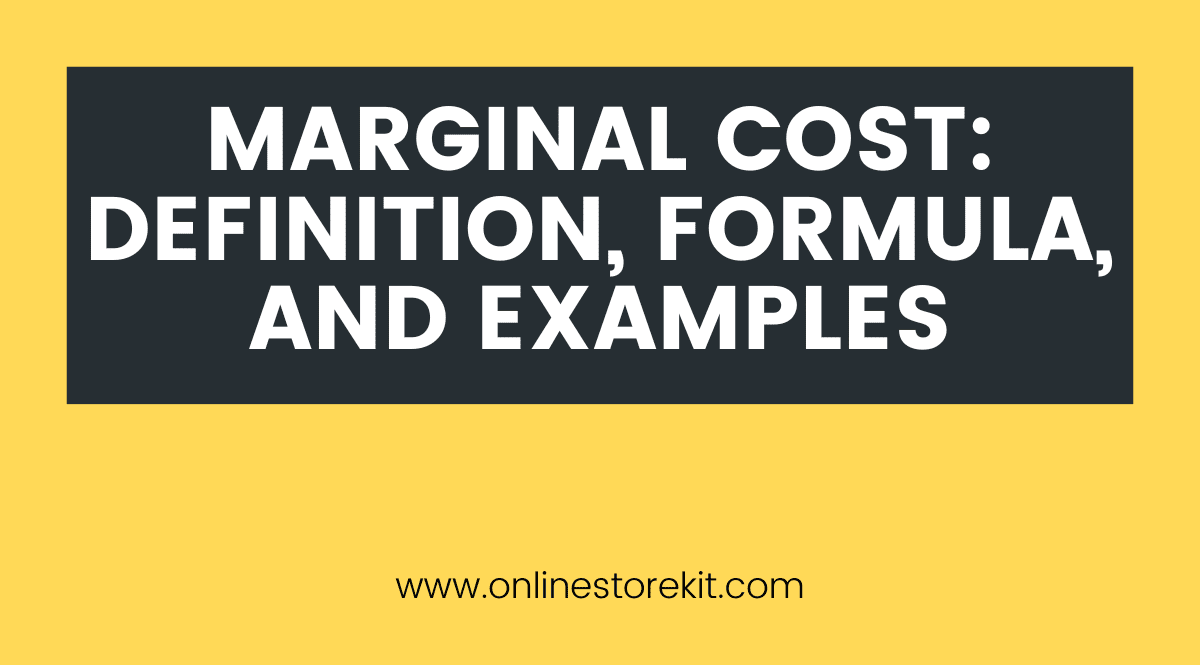Marginal cost is a concept that must be understood by business owners, economists, and financial analysts alike.
It involves the calculation of an additional cost associated with producing one more unit of a product or service.
This article will explore its definition, formula, and provide examples to illustrate its use in practical applications.
By understanding marginal cost and how it works, individuals can make more informed decisions regarding their businesses and investments.
Highlights
Hide- Marginal cost measures the incremental costs of producing an additional unit of a good or service.
- Calculating marginal cost involves dividing the change in total production costs by the change in output quantity.
- Marginal cost is important for decision-making related to investment strategies, pricing strategies, and production-related activities.
- By understanding marginal cost, businesses can remain competitive, maximize efficiency, and make informed choices to optimize their bottom line.
What is Marginal Cost? Understanding Marginal Cost
Marginal cost is an economic concept that measures the incremental costs associated with producing one additional unit of a good or service.
It is calculated by taking the total change in production costs and dividing it by the change in output quantity.
This metric is important for businesses to consider when making decisions related to investment strategies, pricing strategies, and other production-related activities.
The formula for calculating marginal cost is expressed as MC = (change in total cost) / (change in output).
To determine marginal cost, businesses must identify the specific increase or decrease in costs of producing an additional item while also accounting for changes in fixed costs such as labor and materials needed to produce it.
The resulting value will indicate how much it would cost a business to produce another unit of a product or service.
A simple example illustrating how this concept works can be seen when evaluating changes in labor costs that result from hiring new employees.
If a business determines that hiring one more employee would increase its total wage bill by $2,000 per month but allow it to produce 10% more output than before, then the marginal cost would be $200 per extra unit produced ($2,000/10%).
Ultimately, companies need to analyze their marginal costs if they want to remain competitive and maximize efficiency.
Calculating Marginal Cost
Calculating the additional cost of producing one more unit of output is an important part of economic analysis. Marginal cost is the incremental cost that results from producing one additional unit of a good or service.
It can be calculated by understanding and identifying the various cost drivers involved in production.
These may include labor, materials, overhead, and energy costs, as well as any other variable factors that contribute to total production costs.
The formula for calculating marginal cost includes these components: MC = Change in Total Cost / Change in Quantity Produced.
This equation provides insight into pricing strategies since it shows how much additional revenue must be generated to cover the extra costs associated with increased output levels.
Additionally, understanding marginal cost helps businesses make informed decisions about their operations and determine how best to allocate resources for maximum efficiency and profitability.
Examples of Marginal Cost
Examples of the additional cost associated with producing one more unit of output can be seen in various industries.
In particular, marginal cost is a concept that helps to quantify the costs associated with increasing production. Here are some examples of how this concept works:
- Dynamic Pricing: When businesses set prices based on supply and demand, they must consider the marginal cost of each additional unit made available for sale.
- Supply Chain: Companies must account for both direct and indirect costs when calculating their marginal cost, such as raw materials, labor, transportation fees and storage costs.
- Cost Benefit Analysis: Businesses can use data about their marginal costs to help determine which products or services will be most profitable.
- Quality Control: By understanding their marginal cost structure, companies can make strategic decisions about how much they should invest in quality control measures for improved outcomes.
Overall, understanding marginal cost helps businesses make informed decisions about production levels that maximize profitability while maintaining customer satisfaction.
Benefits of Calculating Marginal Cost
Evaluating marginal cost can provide a number of benefits for businesses. By understanding the marginal costs associated with production and pricing decisions, companies can better plan their operations and budget to maximize profits.
Marginal cost analysis allows businesses to study how increasing or decreasing production affects costs and revenue, allowing them to make informed choices that optimize their bottom line.
Calculating the marginal cost of a product also gives companies insight into which products are more profitable than others, helping them decide where to focus resources in order to achieve desired outcomes.
Additionally, analyzing the cost benefit of each product helps managers determine an optimal price point for goods and services while still maintaining profit margins. This helps ensure that prices are competitive without eroding profitability.
Limitations of Marginal Cost Analysis
Although marginal cost analysis can be an effective tool for businesses to optimize their operations and make informed decisions, it is subject to certain limitations.
One limitation is that it does not account for opportunity costs associated with producing additional units of a product or service.
For instance, if a business increases production of a certain item, the opportunity cost could include foregone revenue from other products or services.
Additionally, marginal cost analysis may not accurately reflect all costs associated with increasing production since some overhead expenses are fixed regardless of the quantity produced.
Finally, marginal cost analysis assumes that all costs are fixed and do not change based on increased levels of production when in reality this may not always be true.
The limitations associated with marginal cost analysis highlight the importance of reducing overhead expenses and considering potential opportunity costs when evaluating different scenarios for increasing production.
This can help ensure that businesses make informed decisions which ultimately result in maximum efficiency and profitability:
- Evaluating potential opportunities by assessing both fixed and variable overhead expenses
- Considering foregone revenues due to decreased focus on other products/services
- Analyzing changes in raw material prices as well as labor costs over time
- Accounting for any additional financial risks associated with increased production
Conclusion: Marginal Cost Definition, Formula, and Examples
Marginal cost analysis is a powerful tool for businesses to use in order to make decisions that will maximize their profits.
It can help inform pricing and production decisions, as well as identify areas where resources may be allocated more efficiently.
While there are limitations to the approach, it is still a valuable method of decision-making and should not be overlooked.
By understanding the definition, formula, and examples of marginal cost analysis, businesses can gain insight into how best to allocate their resources for maximum profit potential.





